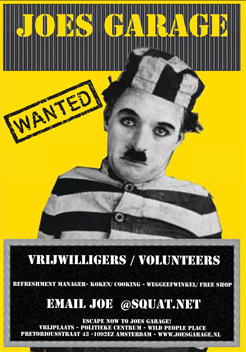
Sunday March 18th 2018, Can Dialectics Break Bricks Cinema: Moi, un noir (1958). Directed by Jean Rouch. 73 minutes. In French with English subtitles. Doors open at 20:00, film starts at 20:30.
Today the name of ethnographer Jean Rouch is barely even whispered in cinema history, which just goes to show that history is always recorded by the winners. Today the winner is Hollywood… but perhaps tomorrow an influence like Jean Rouch could shatter the glass menagerie of American filmmaking. Who knows?
In this cinematic gem Jean Rouch traveled to Abidjan, on the Ivory Coast of Africa, with no predetermined concept. He wanted to make a film with the local people, to record their everyday lives and their dreams. So Rouch starts to hang out in Treichville – one of the poorest neighborhoods of Abidjan – and spends a week with immigrants from Niger who have come to the big city hoping to become successful. Now here is where the real importance of this film begins to shine… these down and out people are doing hard labor (for us here in Europe) and trying to scrape enough money together to buy a bowl of soup, but have re-named themselves after stars in western movies. One calls himself Tarzan, another Edward G. Robinson and another is Eddy Constantine. One even plays an FBI Agent. At night they hang out in bars and try to drink away their misery, and when they go to sleep we follow their dreams of an idealized world. The movie then submerges into poetic mode as we enter these dream-sequences.
The result is a cinematic fusion called “ethnofiction.” Director Jean Rouch had an explosive impact on cinema back in the 60s, and many in the French New Wave, like Jean-Luc Godard, would name him as one of their major influences. Jean Rouch took narrative cinema and fused it with anthropology and sociology: sometimes his films were documentaries tinted with fiction, and at other times they were fiction tinted with documentary.
The magic of this movie is how it nails down the way imperialism works today… less with guns and tanks, and more with the overtaking of dreams. It is clear the local dreams of these people in Africa have been hijacked by foreigners – so what we are talking about is a colonization of the subconscious. I daresay the same is true in Europe today, which has been robbed of its own dreams and replaced by those of the Yankees. Another rare screening of a neglected masterpiece.
Film night at Joe’s Garage, cozy cinema! Free entrance. You want to play a movie, let us know: joe [at] squat [dot] net









